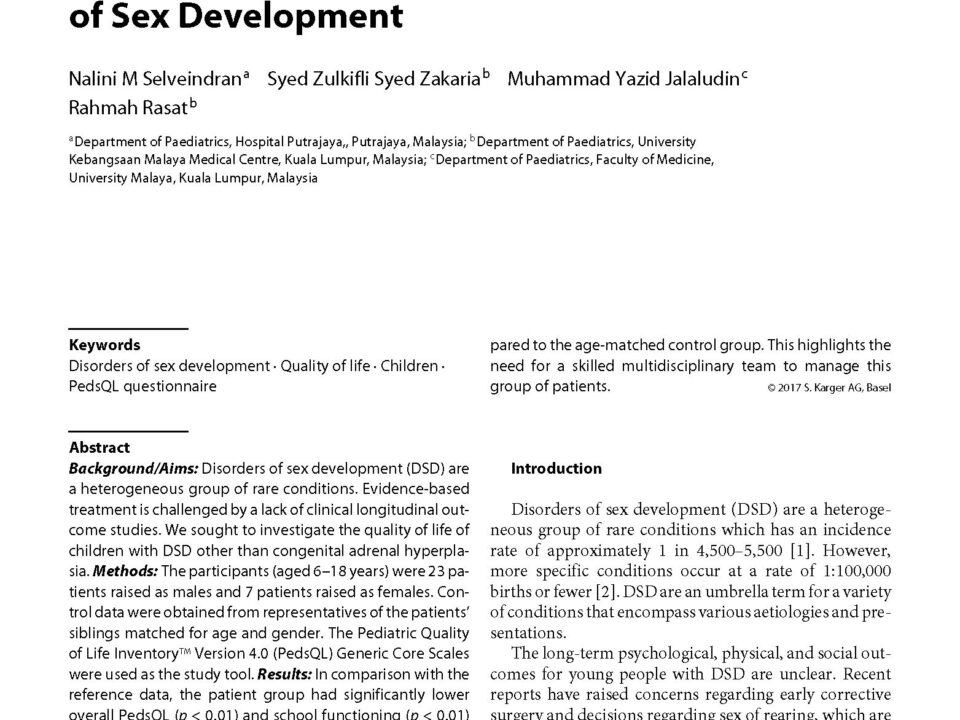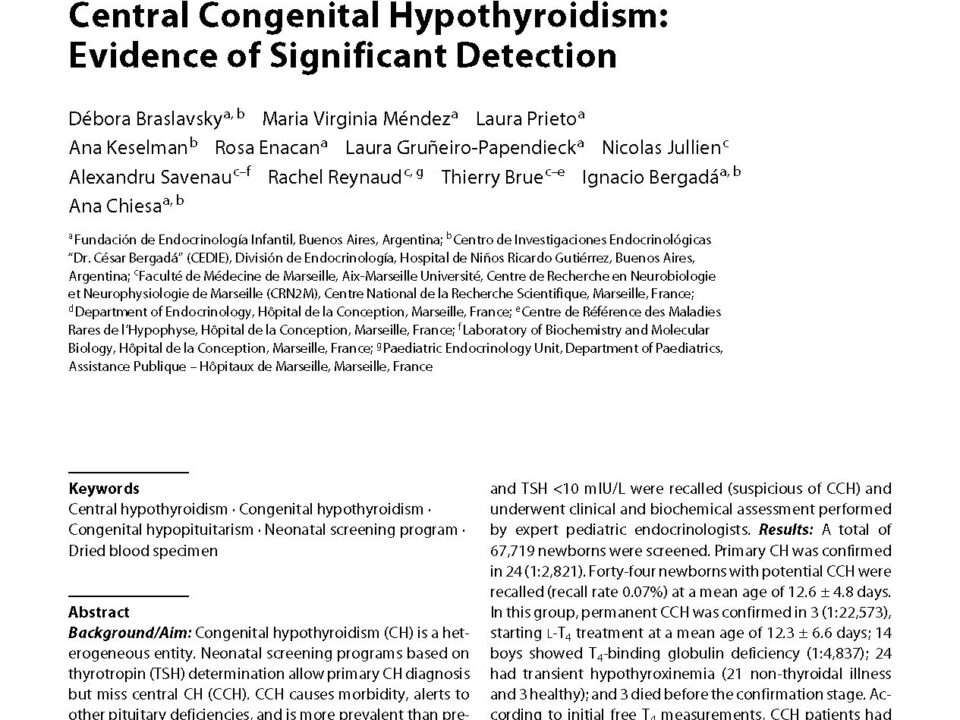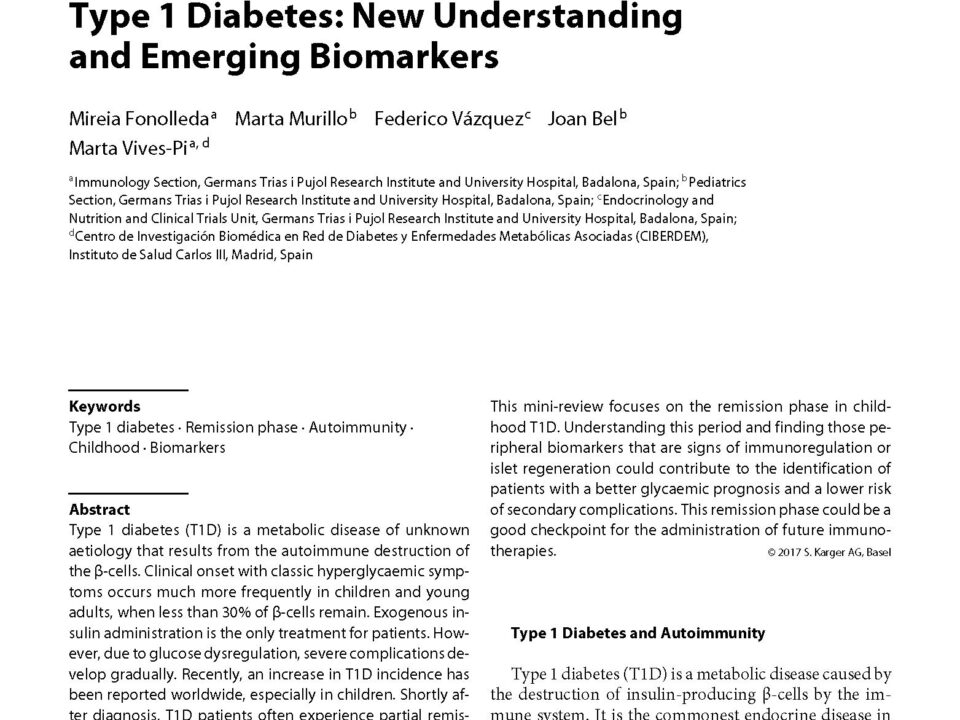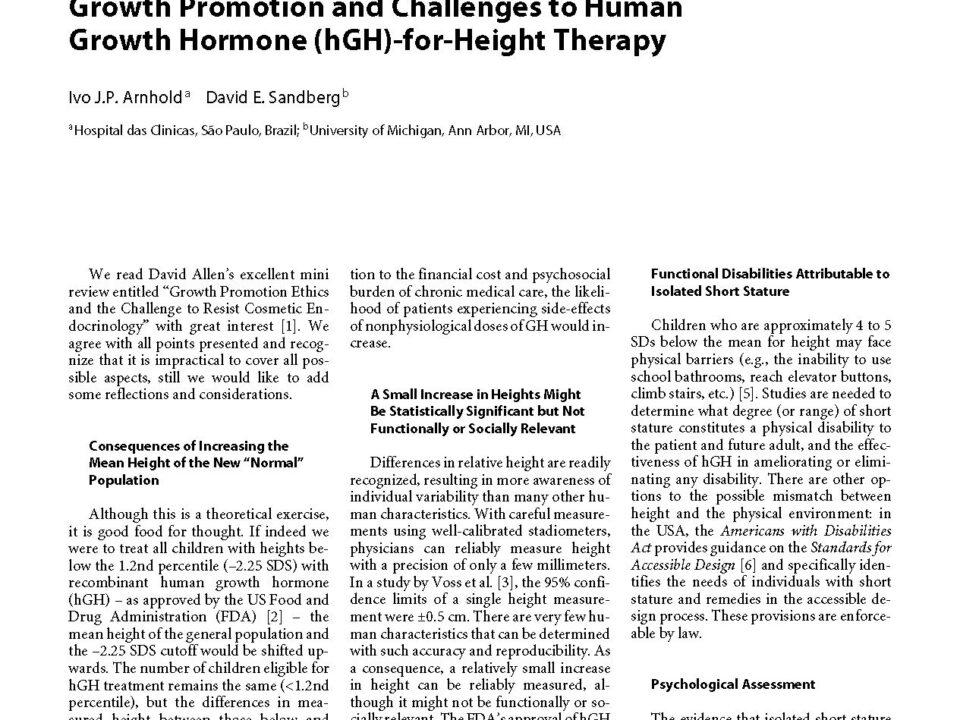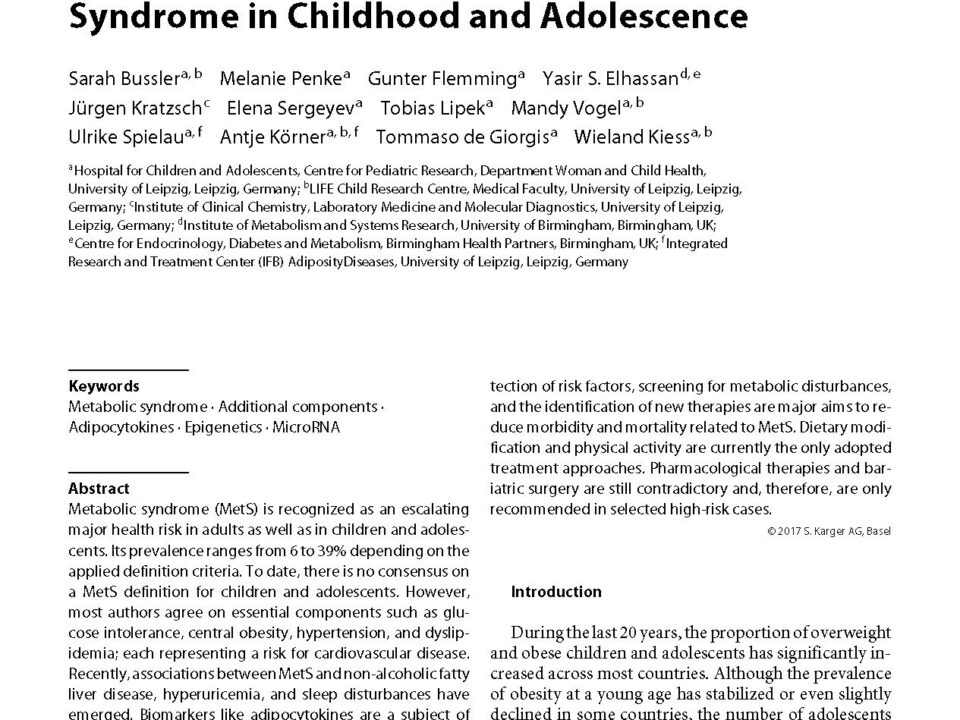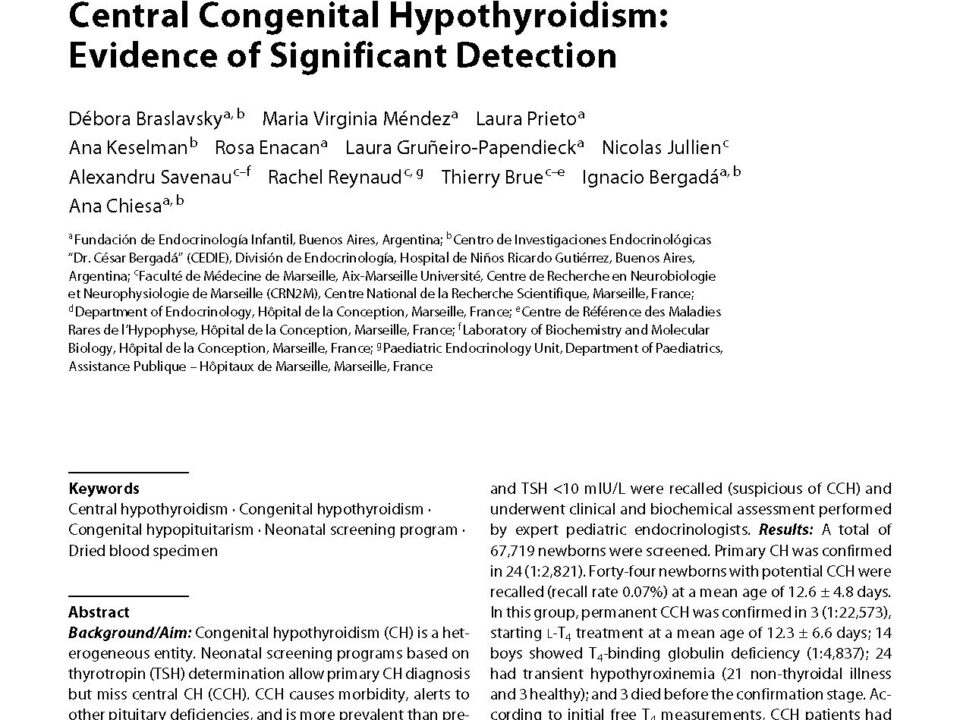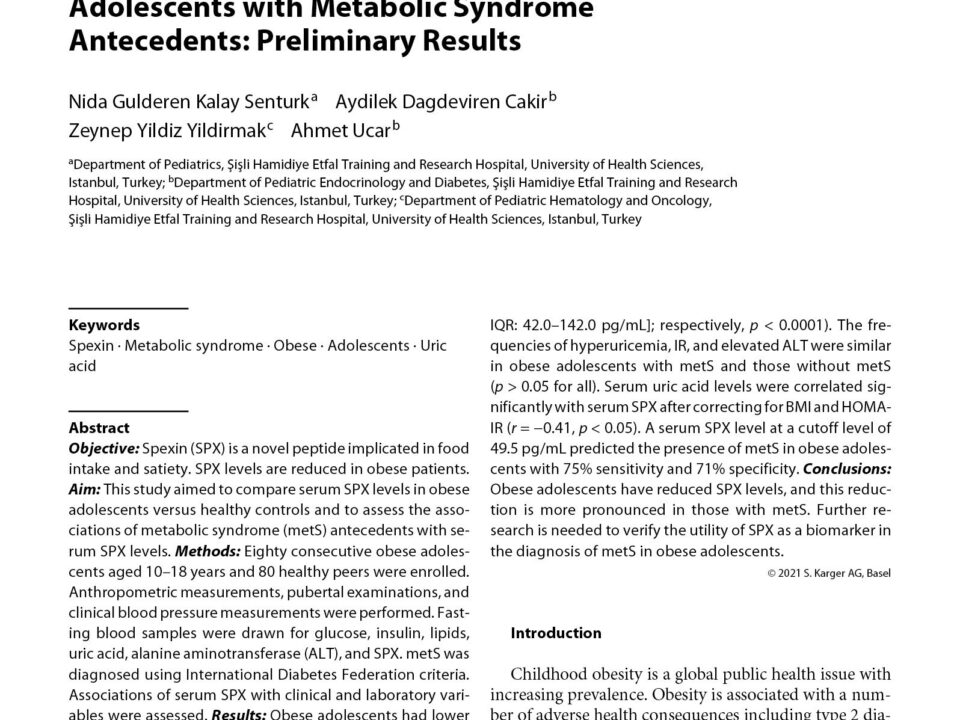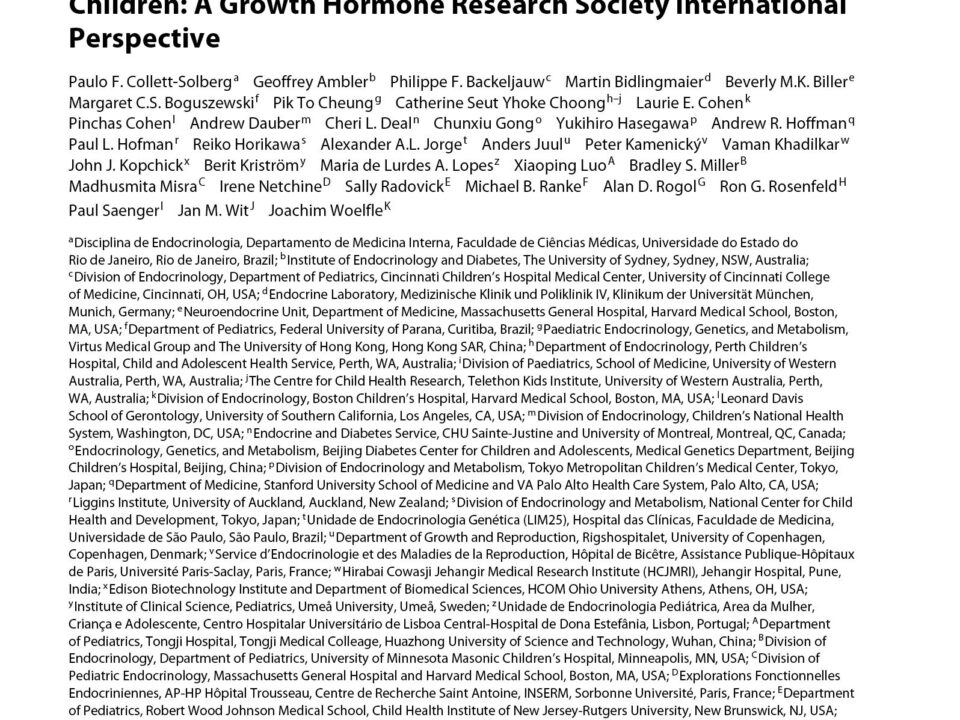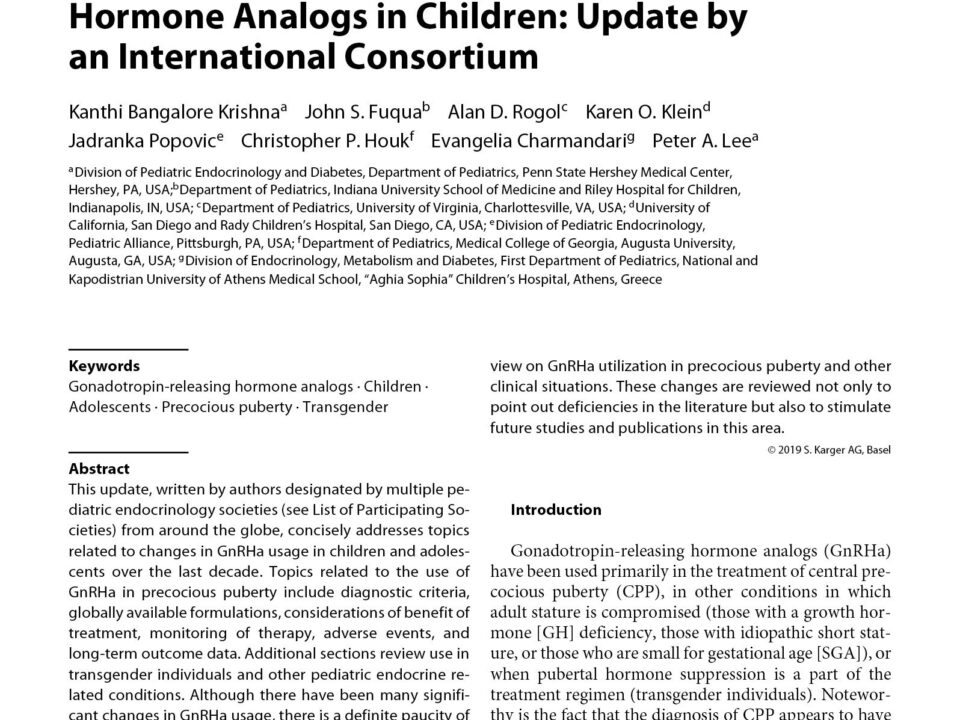December 13, 2022
Background/Aims: Disorders of sex development (DSD) are a heterogeneous group of rare conditions. Evidence-based treatment is challenged by a lack of clinical longitudinal outcome studies. We sought to investigate the quality of life of children with DSD other than congenital adrenal hyperplasia. Methods: The participants (aged 6–18 years) were 23 patients raised as males and 7 patients raised as females. Control data were obtained from representatives of the patients’ siblings matched for age and gender. The Pediatric Quality of Life InventoryTM Version 4.0 (PedsQL) Generic Core Scales were used as the study tool. Results: In comparison with the reference data, the patient group had significantly lower overall PedsQL (p < 0.01) and school functioning (p < 0.01) scores. Also, the total PedsQL score was significantly lower in patients with DSD who were of female social sex as compared to the controls who were females. Family income, surgical procedures, degree of virilization, and mode of puberty did not influence the PedsQL scores. Conclusion: This study revealed a poorer quality of life for patients with DSD as compared to the age-matched control group. This highlights the need for a skilled multidisciplinary team to manage this group of patients.
December 13, 2022
Background: Diazoxide is the first-line treatment for pediatric hyperinsulinemic hypoglycemia (HI). This study aimed to elucidate the pharmacokinetics of diazoxide in children with HI. Methods: We obtained 81 blood samples from 22 children with HI. Measured serum diazoxide concentrations were used for population pharmacokinetic analysis. Patient factors influencing pharmacokinetics were estimated using nonlinear mixed-effects model analysis. Relationships between drug exposure and adverse drug reactions were also investigated. Results: Diazoxide disposition in the body was described by a 1-compartment model. Oral clearance (CL/F) and the volume of distribution were proportional to body weight (WT), as expressed by CL/F in males (liters/h) = 0.0358 + 0.00374 × WT (kg). CL/F in females was 39% greater than that in males. Steady-state concentrations of diazoxide were similar following twice- and 3 times-daily dosing when the total daily doses were comparable. A patient whose serum diazoxide concentration exceeded 100 μg/mL over a 4-month period developed hyperglycemia. No significant correlation was observed between severity of hirsutism and diazoxide concentration. Conclusion: We have proposed for the first time a population pharmacokinetic model for diazoxide in children with HI. The potential risk of diabetes mellitus and/or hyperglycemia increases when serum concentrations of diazoxide exceed 100 μg/mL.
December 13, 2022
Type 1 diabetes (T1D) is a metabolic disease of unknown aetiology that results from the autoimmune destruction of the β-cells. Clinical onset with classic hyperglycaemic symptoms occurs much more frequently in children and young adults, when less than 30% of β-cells remain. Exogenous insulin administration is the only treatment for patients. However, due to glucose dysregulation, severe complications develop gradually. Recently, an increase in T1D incidence has been reported worldwide, especially in children. Shortly after diagnosis, T1D patients often experience partial remission called “honeymoon phase,” which lasts a few months, with minor requirements of exogenous insulin. In this stage, the remaining β-cells are still able to produce enough insulin to reduce the administration of exogenous insulin. A recovery of immunological tolerance to β-cell autoantigens could explain the regeneration attempt in this remission phase. This mini-review focuses on the remission phase in childhood T1D. Understanding this period and finding those peripheral biomarkers that are signs of immunoregulation or islet regeneration could contribute to the identification of patients with a better glycaemic prognosis and a lower risk of secondary complications. This remission phase could be a good checkpoint for the administration of future immunotherapies.
December 13, 2022
We read David Allen’s excellent mini review entitled “Growth Promotion Ethics and the Challenge to Resist Cosmetic Endocrinology” with great interest [1]. We agree with all points presented and recognize that it is impractical to cover all possible aspects, still we would like to add some reflections and considerations
December 13, 2022
Metabolic syndrome (MetS) is recognized as an escalating major health risk in adults as well as in children and adolescents. Its prevalence ranges from 6 to 39% depending on the applied definition criteria. To date, there is no consensus on a MetS definition for children and adolescents. However, most authors agree on essential components such as glucose intolerance, central obesity, hypertension, and dyslipidemia; each representing a risk for cardiovascular disease. Recently, associations between MetS and non-alcoholic fatty liver disease, hyperuricemia, and sleep disturbances have emerged. Biomarkers like adipocytokines are a subject of current research as they are implicated in the pathogenesis of the MetS. Epigenetics and gestational programming, especially the role of microRNA, comprise a novel, rapidly developing and promising research focus on the topic of MetS. MicroRNAs are increasingly valued for potential roles in the diagnosis, stratification, and therapeutics of MetS. Early detection of risk factors, screening for metabolic disturbances, and the identification of new therapies are major aims to reduce morbidity and mortality related to MetS. Dietary modification and physical activity are currently the only adopted treatment approaches. Pharmacological therapies and bariatric surgery are still contradictory and, therefore, are only recommended in selected high-risk cases.
December 13, 2022
Background/Aim: Congenital hypothyroidism (CH) is a heterogeneous entity. Neonatal screening programs based on thyrotropin (TSH) determination allow primary CH diagnosis but miss central CH (CCH). CCH causes morbidity, alerts to other pituitary deficiencies, and is more prevalent than previously thought. We aimed at developing a pilot neonatal screening program for CCH detection. Patients and Methods: A prospective 2-year pilot neonatal screening study based on simultaneous dried blood specimen TSH and thyroxine (T4) measurements was implemented in term newborns aged 2–7 days. Those with T4 ≤4.5 µg/dL (–2.3 SDS) and TSH <10 mIU/L were recalled (suspicious of CCH) and underwent clinical and biochemical assessment performed by expert pediatric endocrinologists. Results: A total of 67,719 newborns were screened. Primary CH was confirmed in 24 (1: 2,821). Forty-four newborns with potential CCH were recalled (recall rate 0.07%) at a mean age of 12.6 ± 4.8 days. In this group, permanent CCH was confirmed in 3 (1: 22,573), starting L-T4 treatment at a mean age of 12.3 ± 6.6 days; 14 boys showed T4-binding globulin deficiency (1: 4,837); 24 had transient hypothyroxinemia (21 non-thyroidal illness and 3 healthy); and 3 died before the confirmation stage. According to initial free T4 measurements, CCH patients had moderate hypothyroidism. Conclusions: Adding T4 to TSH measurements enabled the identification of CCH as a prevalent condition and contributed to improving the care of newborns with congenital hypopituitarism and recognizing other thyroidal disorders.
December 13, 2022
Objective: Spexin (SPX) is a novel peptide implicated in food intake and satiety. SPX levels are reduced in obese patients. Aim: This study aimed to compare serum SPX levels in obese adolescents versus healthy controls and to assess the associations of metabolic syndrome (metS) antecedents with serum SPX levels. Methods: Eighty consecutive obese adolescents aged 10–18 years and 80 healthy peers were enrolled. Anthropometric measurements, pubertal examinations, and clinical blood pressure measurements were performed. Fasting blood samples were drawn for glucose, insulin, lipids, uric acid, alanine aminotransferase (ALT), and SPX. metS was diagnosed using International Diabetes Federation criteria. Associations of serum SPX with clinical and laboratory variables were assessed. Results: Obese adolescents had lower serum SPX levels than healthy peers (50 pg/mL [25–75% IQR: 25–98 pg/mL] and 67.0 pg/mL [25–75% IQR: 32.5–126.0 pg/mL]; respectively, p = 0.035). Twenty (25%) obese adolescents were diagnosed as having metS. Obese adolescents with metS had lower SPX than those without metS (24.5 pg/mL [25–75% IQR: 15.3–49.5 pg/mL] and 69.0 pg/mL [25–75% IQR: 42.0–142.0 pg/mL]; respectively, p < 0.0001). The frequencies of hyperuricemia, IR, and elevated ALT were similar in obese adolescents with metS and those without metS (p > 0.05 for all). Serum uric acid levels were correlated significantly with serum SPX after correcting for BMI and HOMA-IR (r = −0.41, p < 0.05). A serum SPX level at a cutoff level of 49.5 pg/mL predicted the presence of metS in obese adolescents with 75% sensitivity and 71% specificity. Conclusions: Obese adolescents have reduced SPX levels, and this reduction is more pronounced in those with metS. Further research is needed to verify the utility of SPX as a biomarker in the diagnosis of metS in obese adolescents.
December 13, 2022
The Growth Hormone Research Society (GRS) convened a Workshop in March 2019 to evaluate the diagnosis and therapy of short stature in children. Forty-six international experts participated at the invitation of GRS including clinicians, basic scientists, and representatives from regulatory agencies and the pharmaceutical industry. Following plenary presentations addressing the current diagnosis and therapy of short stature in children, breakout groups discussed questions produced in advance by the planning committee and reconvened to share the group reports. A writing team assembled one document that was subsequently discussed and revised by participants. Participants from regulatory agencies and pharmaceutical companies were not part of the writing process. Short stature is the most common reason for referral to the pediatric endocrinologist. History, physical examination, and auxology remain the most important methods for understanding the reasons for the short stature. While some long-standing topics of controversy continue to generate debate, including in whom, and how, to perform and interpret growth hormone stimulation tests, new research areas are changing the clinical landscape, such as the genetics of short stature, selection of patients for genetic testing, and interpretation of genetic tests in the clinical setting. What dose of growth hormone to start, how to adjust the dose, and how to identify and manage a suboptimal response are still topics to debate. Additional areas that are expected to transform the growth field include the development of long-acting growth hormone preparations and other new therapeutics and diagnostics that may increase adult height or aid in the diagnosis of growth hormone deficiency.
December 13, 2022
This update, written by authors designated by multiple pediatric endocrinology societies (see List of Participating Societies) from around the globe, concisely addresses topics related to changes in GnRHa usage in children and adolescents over the last decade. Topics related to the use of GnRHa in precocious puberty include diagnostic criteria, globally available formulations, considerations of benefit of treatment, monitoring of therapy, adverse events, and long-term outcome data. Additional sections review use in transgender individuals and other pediatric endocrine related conditions. Although there have been many significant changes in GnRHa usage, there is a definite paucity of evidence-based publications to support them. Therefore, this paper is explicitly not intended to evaluate what is recommended in terms of the best use of GnRHa, based on evidence and expert opinion, but rather to describe how these drugs are used, irrespective of any qualitative evaluation. Thus, this paper should be considered a narrative review on GnRHa utilization in precocious puberty and other clinical situations. These changes are reviewed not only to point out deficiencies in the literature but also to stimulate future studies and publications in this area.
